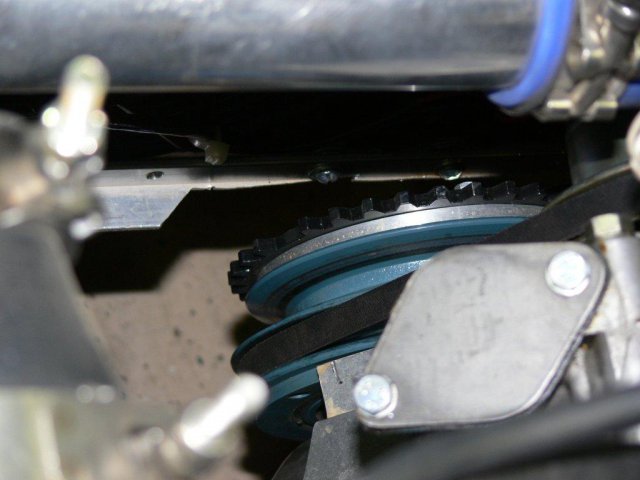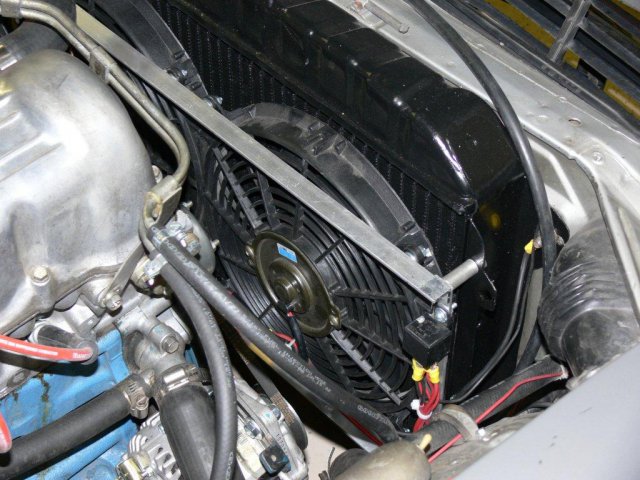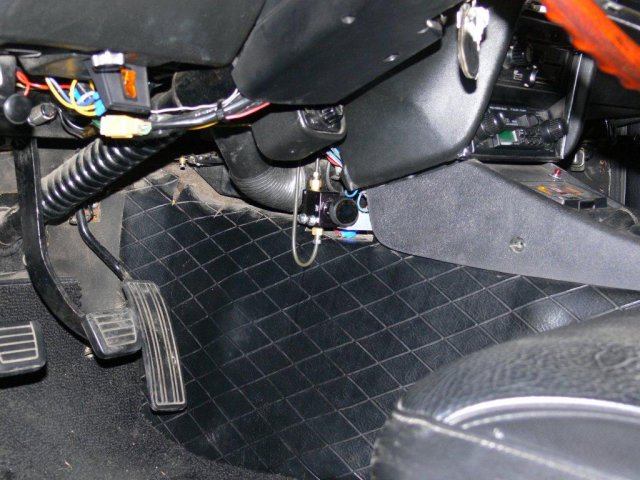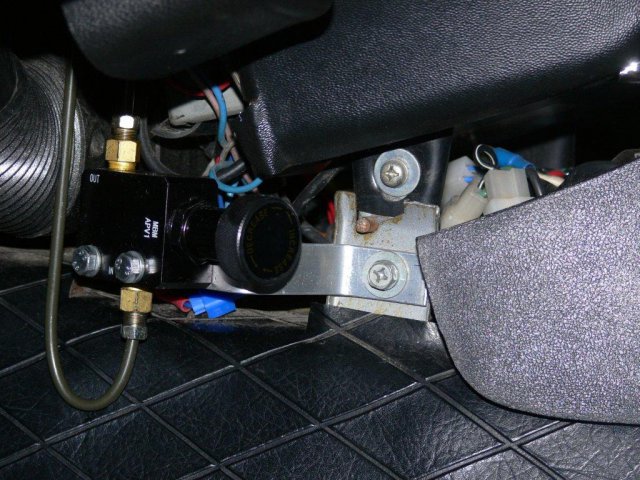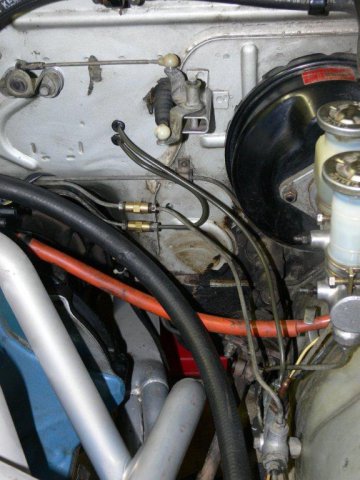-
Posts
1568 -
Joined
-
Last visited
-
Days Won
1
Content Type
Profiles
Forums
Blogs
Events
Gallery
Downloads
Store
Everything posted by Zmanco
-
"lash pad" is the more common term used with our L engines. I'd also search on "wipe pattern" as that's what you're measuring/observing. Sorry I don't have the time right now to search for it myself. Good luck!
-
Matt, great article - wish I had this when I started, would have sped me up the learning curve. I'll add one more thing. Make sure that the injector opening time is accurate, especially for large injectors. If it's off, then even if you set the VE values the same for two different MAP levels (say 40 and 45 kPa at 750 rpm), the amount of fuel delivered will be changing more than what the changing amount of air requires and this will only make it harder to tune.
-
I just converted a P90 hydraulic to mechanical lifters and it's very simple. The part you need is Time-Sert M18x1.5 x18 @ 0.3mm. part #18153. You determine the correct lash pad by trial and error on the bench by measuring the wipe pattern of the lobe on the rocker. This has been well documented elsewhere on this site so I won't repeat it. I don't remember seeing any turbo cam grinds for hydraulic heads when I was looking. If you found one please let us know. I wouldn't miss adjusting valves
-
Are you running a single coil? If you do the math, at high revs there just isn't a lot of time between spark events to fully build up the field in the coil. For example, at 5k rpm the coil has to fire every 4 ms. You could try a capacitive discharge system such as MSD which will help some. As I tuned above ~1.7 bar I found I was getting erratic spark at higher revs and boost. I eventually went EDIS and haven't had an issue since.
-
The dizzy shaft also drives the oil pump so you can't remove it. I cut off the top part of the shaft that would drive the distributor as it's not held in alignment once the distributor is removed, but some don't bother. If my description isn't clear, search here for pictures showing the shaft installed in the timing cover and it will make sense.
-
With just the damper there was a very tight fit to get the fan belt between it and the aluminum frame, so I notched the frame as you can see in this picture. Some day I may need to change the fan belt on the side of the road and don't want to make it any harder than it needs to be. FYI, this is with a 4 core radiator which is about as thick as they get.
-
I used 2 12" ebay fans installed with a separate frame. The picture is before I added the turbo and the intercooler pipe now runs across parallel to the top efan bracket. The fans are just adequate on days above 90F - would be nice to put a more powerful set in, but this radiator is a 4 row and there just isn't room for any of the OEM fans I've found so far.
-

Suspension alignment tools for the home garage
Zmanco replied to Zmanco's topic in Brakes, Wheels, Suspension and Chassis
I plan to copy something I saw on the eastwood site where two plates are placed flat against the front wheels and tape measures are used to measure the distance between front and rear of tires. -
I'm ready to slot the front strut mounts and rather than pay my local alignment shop I would prefer to buy a set of measuring tools for caster and camber to do it myself. So far I see these two mentioned the most: SmartCamber Caster Camber Tool Longacre Digital Caster Camber Gauge They're about the same price and appear to use the same principles to measure camber and caster. I'm leaning towards the SmartCamber because the lack of moving pieces in the frame makes me think it will hold up better over time. Does anyone have any experience with these they can share? And are there other solutions to consider?
-
I'll take a stab at summarizing this thread in terms of what can be done to reduce detonation by improving how the head is cooled. Disclaimer #1: I've been following it from the beginning and have not gone back to reread from the start, so I've probably missed a few things. Disclaimer #2: There is a lot of really valuable discussion that anyone serious about pushing above-average power out of their L2X should read. The summary below completely ignores all of it, but that doesn't mean it isn't important. Think of this as the Cliff Notes of the Cliff Notes Summary: - The path of coolant through the L engines results in the rear of the head receiving the hottest coolant and hence having the highest operating temps. - This can result in nucleate boiling at the rear of the head which can create a vapor barrier that slows the absorption of heat from the head to the coolant, making the #5 and 6 cylinders most likely to detonate. There are several things that can be done to improve this: 1) Drill and tap above the #5 and 6 exhaust ports and route coolant to the thermostat housing to improve the flow of coolant at the rear of the head. Some have gone further and include #3 and 4, and some have even tapped all 6. 2) A higher pressure radiator cap can help reduce nucleate boiling. 3) The L28 diesel water pump can be made to fit and improves coolant flow. 4) Tapping and plugging the block to stop coolant flow from bypassing the thermostat (and hence radiator) helps, but make sure that the #1 mod above is done to avoid water pump cavitation before the thermostat opens. 5) Non-aqueous coolant helps prevent nucleate boiling. 6) Water wetter seems to help in some cases, not so much in others.
-

Show your proportioning valve location
Zmanco replied to ZT-R's topic in Brakes, Wheels, Suspension and Chassis
I initially mounted it on the fender near the brake M/C, but it was a pain to adjust at the track so moved it into the cabin. At the time I had the intake manifold off so it was easy to bring the brake lines in from engine side of the firewall. I don't think it would have been possible with the engine fully assembled. The bracket is aluminum bar from Lowes as my metal working skills are limited. -
I think the question you need to answer is what would you do if you have a flat or damage the wheel/tire? Do you stay close to home or take cross country trips? e.g. sourcing a new wheel/tire off of I80 in the middle of Nevada might be a challenge. Also, keep in mind that if you've upgraded the brakes, the stock spare may not clear them, especially with the 71-73.
-
Dave, if you haven't already thought about it, you might consider adding a knock sensor. I used the factory turbo sensor with this: KnockSense It comes with a red LED that lights when it detects knock. It also has an output for the ECU. I had initially tuned without the sensor listening for knock with my ears and taking a few more degrees out for safety. After adding the knocksense I found that there was still occasional detonation, especially in the 5k rpm range. If you use MS2/extra, there is an option to retard spark when knock is detected and then return it when it stops. I figured it was cheap insurance, as well as another cool feature The knock retard can also be seen in the MLV logs so you can see exactly at what rpm, advance, and AFR the detonation occurs. It takes some more of the guessing out of tuning.
-

Looking for windshield rubber alternative
Zmanco replied to z2go's topic in S30 Series - 240z, 260z, 280z
z2go, are you saying that there are no sources for the stock gasket that include the chrome strip? Or is it that you can't find one without the channel for the strip? I need to replace my windshield but have been putting if off assuming that it will be a hassle to find someone who can source the gasket for our old cars. Like you, I wouldn't mind leaving the chrome off. -

Toe Changes for Track Use
Zmanco replied to heavy85's topic in Brakes, Wheels, Suspension and Chassis
I'm using the TechnoToy Tuning LCA and TC parts and have found the most caster I can obtain is about 3 degrees before the tire edge begins to rub on the valence in front. This is with a 16 x 7 Panasport and 225/50 tires such as Dunlop Direzza Star Specs, so nothing radical. I'll probably slot the strut towers to gain a little more, but wonder if anyone has found another approach to gain more caster? I don't want to cut up the fender/valence lip as this is a mostly street driven car and I'd like to maintain its otherwise mostly stock appearance. -

To reach 400hp... which powertrain?
Zmanco replied to nacitar's topic in S30 Series - 240z, 260z, 280z
Power steering begins to make a lot more sense when you add camber and caster beyond the stock settings. Otherwise stock steering is reasonable for most people. -
I too was considering adding a cat to my turbo motor to reduce fumes and emissions too - don't mind being a little green if it doesn't hurt But I was worried about how it would deal with sustained periods of WOT at AFR ~12 at the track, and this discussion confirms that it probably wouldn't have lived, if it didn't melt the undercarriage first. Great discussion - simple questions often don't have simple answers. One follow on question: I recall reading elsewhere that a typical NA engine makes max power in the 13:1 range. Yet that's likely to overheat/overwhelm the cats. So how do performance cars such as Corvette, Ferrari, and Porsche handle this? Do they still run close to stoich at WOT and sacrifice some power?
-
My set up is the same and that's the plug I'm running.
-

Toe Changes for Track Use
Zmanco replied to heavy85's topic in Brakes, Wheels, Suspension and Chassis
This is a fantastic discussion and has really helped me to better visualize how various suspension settings affect handling. I am a bit surprised that there hasn't been much discussion of caster. Wouldn't adding caster be another way to improve turn-in and increase front grip? -
I think you'll find that very few of us will remember exactly how to modify a MS board within a few weeks after we've done it. Hence you should find the mod you're interested in on the MS site and use that to guide you. At times it can be a bit confusing to navigate, but the good news is that the site is much better now than it used to be in this regard and continues to improve. Other than that, your approach is correct. Build the board with whatever mods you need for your setup, then download the correct firmware to it, and install.
-

Connecting original harness after installing megasquirt
Zmanco replied to J240ZTurbo's topic in MegaSquirt
cygnusx1 called it - you need to tell us how more about your setup. For example, is MS controlling spark? What is driving the coil? Are you using the stock clt sensor or did you add another one? Etc. In general, I would ignore the stock harness and leave it alone to drive the stock gauges. Instead, just pull new wire between each device and the MS harness. Side note: I don't understand why so many people try to reuse the stock harness, especially with the older cars where they are usually unreliable by now. I would argue that it's just as confusing (if not more so) to figure out the harness wiring as it is to just pull new wires. -
FWIW, I was speaking with Ron Iskenderian a few weeks ago about using his turbo cam regrind with my existing Schneider springs and he said that was fine - no issues.
-
I'm running this KnockSense with the factory piezo sensor and so far it's worked well. It does pick up some false positives above 6500 rpm now and then, but other than that, it has helped me find spots under partial boost where there was detonation that I didn't hear. For less than $100 (closer to $50 if you use an existing sensor), it's cheap insurance. If you're running megasquirt, the knocksense output can be datalogged, as well as be used to retard timing on the fly.
-
I'll add 2 comments: 1) at the last track day I limited MAP to 1.5 bar and had a blast at the track. Any more than that and my skills as a driver would not keep up. My suspension is more track oriented than yours and yet I still don't have stiff enough springs nor enough caster/camber to fully use the power I made. I did have a fun run with some LS2 GTOs where I was dead even with them in the straights and all over their butts in the corners. Candidly, the car is more fun to drive at this power level. 2) if you haven't already added a knock sensor, you need to before turning things up further. I added a knocksense module using the stock factory 280zxt sensor and was surprised to find spots where I was getting detonation and could not hear it at all. Tuning for detonation with our ears is just not a safe way to do it, especially as you turn the boost up.
-
Anyone with thoughts on where to place the flex pipe? I'm hoping to get it installed on Tuesday.

